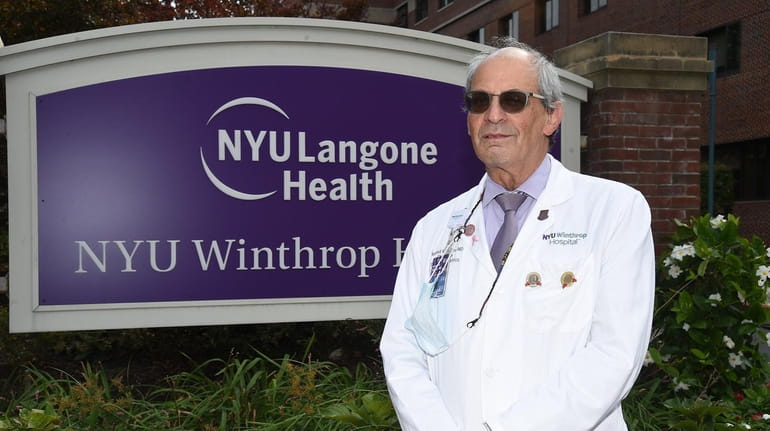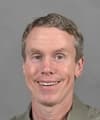Testing positive: New York has among lowest state rates of new COVID-19 cases

New York continues to have one of the nation’s lowest rates of people testing positive for the coronavirus, but experts say recent outbreaks and cooler weather could push those numbers up.
The state had the second-lowest positive test rate in the country, according to Covid Act Now, a nonprofit website run by epidemiologists, public health experts, data scientists and others that analyzes COVID-19 data. In the latest analysis, from Saturday, only Maine, at 0.5%,had a lower rate than New York, which was tied with Vermont for the second-lowest positivity rate of 1.2%. Idaho, with 23.9% of people testing positive, had the highest. The group uses a 7-day rolling average of test results.
In March and April, New York was the epicenter for the pandemic in the United States, with hundreds of residents dying of COVID-19 every day.
"We got from where we were in April because we distanced, we isolated, we masked, and the virus ran its course," said Dr. David Battinelli, chief medical officer of New Hyde Park-based Northwell Health, the state’s largest health system.
New Yorkers take the pandemic more seriously than many other Americans because they lived through the surge in cases that overloaded area hospitals with COVID-19 patients, and they’re more likely to know people who got sick or died from the disease, he said.
"The question about whether this is real, whether it’s a conspiracy, ‘Is it really what they say?,’ ‘I know somebody who didn’t get that sick’ — all that’s been answered locally," he said.
"There is more fear," said Sean Clouston, an associate professor of public health at Stony Brook University.
Clouston said he recently viewed live cams in several states and noticed that in New York most or all people were wearing face coverings, while in states like South Carolina, North Dakota and Louisiana, most of those with masks were seniors or people with visible disabilities, and others typically didn’t wear them.
"I think the culture around mask use is very different — the idea you should protect yourself versus the idea you should wear masks to protect everybody," he said.
Masks both help prevent people from spreading the coronavirus and from being exposed to it themselves. They become even more important as the weather gets cooler and people spend more time indoors, where the virus is much more likely to spread, Clouston said.
New York also took a more gradual approach to reopening its economy, in comparison to mass reopenings in other states, said Dr. Leonard Krilov, an infectious disease specialist at NYU Winthrop Hospital in Mineola and chairman of pediatrics.
"We’ve been more careful," he said.
He contrasted his 10-year-old daughter's Long Island school, with strict social-distancing and other restrictions, with the images he's seen in other states of students crowded together in hallways.
New York also had the sixth-lowest number of daily new cases per 100,000, according to Covid Act Now.
The state’s 7.4 daily new cases per 100,000 residents was much lower than states experiencing surges, such as North Dakota, with 62.7 new cases per 100,000, and South Dakota, with 59.6 cases.
Battinelli said if you travel from New York to an area with a higher positivity rate, you were "increasing your risk," even if you took precautions.
"If you’re wearing a mask and you go to a place where the other guys aren’t, that’s only half the protection," he said.
Battinelli said he'd noticed fewer New Yorkers, particularly young people, wearing masks than a few months ago.
Covid Act Now estimated that each person with the virus in New York is now infecting on average 1.19 other people, compared with 1.03 people less than a month ago and 0.72 people in early May, before the state’s reopening began. New York now has the fifth-highest "infection rate" in the country, according to Covid Act Now. The 14-day weighted average is based largely on the increase in new COVID-19 cases.
State health department data on the topic "is not currently publicly available," spokeswoman Erin Silk said in an email.
Many of the new cases are in parts of Brooklyn, Queens and three upstate counties where positivity rates are up sharply. Gov. Andrew M. Cuomo on Tuesday announced restrictions for those "hot spot" areas that include the closing of nonessential businesses and limiting the number of people in houses of worship to no more than 10.
With fewer people wearing masks and taking precautions, the virus may spread more widely, Battinelli said.
"Given that more and more people appear to not be wearing protection, it is entirely likely that number — the number of people each person will infect — is going to increase," he said. "It’s simple math."
Krilov said the increased number of infections by each person with the virus "speaks to the potential for so-called super-spreader events," at which multiple people could contract the virus, "and reflects how in close quarters, if one person infects three people, five people, and then they go on [to infect others], how it could lead to regrowth or exponential spread."
The recent outbreaks have a potential to spread throughout the region, he said. People visit other neighborhoods for work or personal reasons, so someone who is infectious can spread the virus elsewhere.
Krilov likened the increase in cases to a "percolating volcano."
"It percolates and percolates, and then is it going to erupt or we going to be able to hold it down?" he asked.
CORONAVIRUS TEST RANKINGS
Despite recent outbreaks, New York continues to have among the nation’s lowest rates of people testing positive for the coronavirus.
Highest positivity rates
- 23.9%: Idaho
- 20.6%: South Dakota
- 19.5%: Wisconsin
Lowest positivity rates
- 1.4%: Connecticut
- 1.2%: New York
- 1.2%: Vermont
- 0.5%: Maine
SOURCE: Covid Act Now analysis on Oct. 10, using a 7-day rolling average of test results. Data for North Dakota was unavailable.

